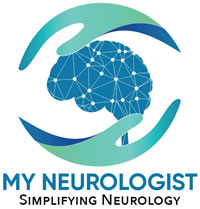What is Cerebrotendinous Xanthomatosis?
It is a rare autosomal recessive genetic disorder of CYP27A1 gene, resulting in defect or deficiency of a mitochondrial enzyme, 27-hydroxylase, which leads to disruption of bile acid metabolism and increased cholesterol levels. Accumulation of cholesterol or lipids in brain, spinal cord, arteries, glands, lens, and tendons cause multiple clinical features.
How is cerebrotendinous xanthomatosis diagnosed?
It is diagnosed with help of blood rests for cholesterol and bile acids, radiological findings, and clinical features.
What are the clinical features of cerebrotendinous xanthomatosis?
It can cause systemic problems such as:
. Childhood intractable diarrhea
. Juvenile onset cataract
. Hypothyroidism
. Xanthomas, benign fatty swellings
. Premature atherosclerosis
. Coronary artery disease
. Atrial septal hypertrophy
. Osteopenia
. Osteoporosis
. Fractures
. Jaundice
It can cause neurological problems such as:
. Ataxia
. Epilepsy
. Dystonia
. Parkinsonism
. Polyneuropathy
. Dementia
. Psychotic symptoms
. Depression
. Myelopathy
What are imaging findings of brain in cerebrotendinous xanthomatosis?
. Diffuse cortical and cerebellar atrophy
. Bilateral focal cerebellar lesions
Is there any treatment for cerebrotendinous xanthomatosis?
- Chenodeoxycholic acid: Targeting the cholesterol metabolism, chenodeoxycholic acid can correct defect of bile acid metabolism and normalize lipid concentration.
- HMG-CoA reductase inhibitor may also help.
Where can I find more information about cerebrotendinous xanthomatosis?
American Academy of Pediatric Neurology Section
United Leukodystrophy Foundation
National Organization for Rare Disorders
Genetic and Rare Diseases Information Center


Leave a Reply
Your email is safe with us.
You must be logged in to post a comment.